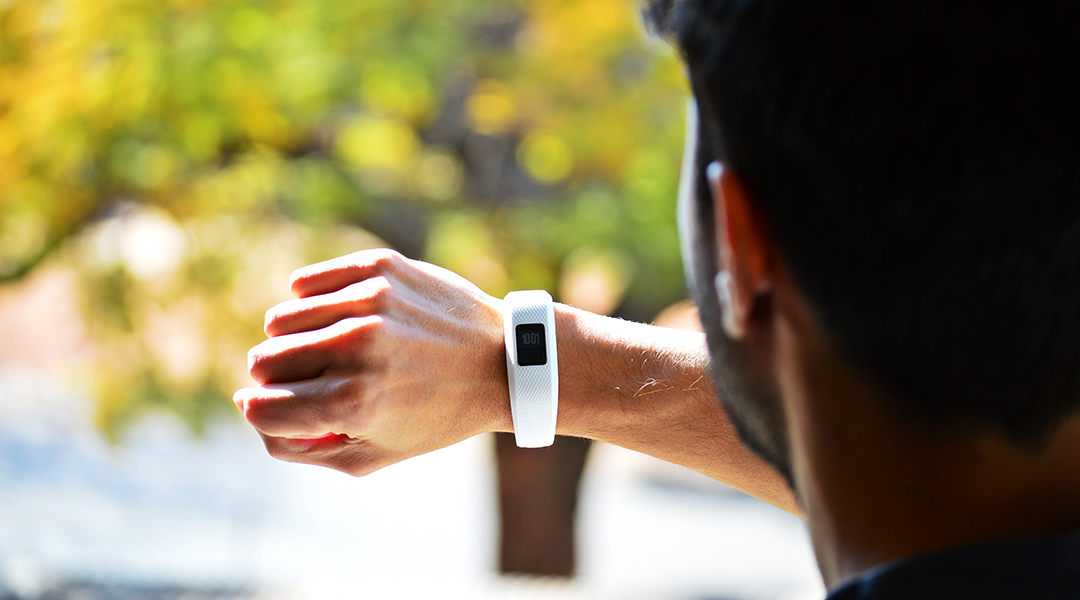Personal health monitoring wearables are a noninvasive way to track physiological and biochemical parameters that medical professionals and algorithms can link to health status.
Real-time monitoring of health indicators can flag changes and build records that reduce the time frame for emergency response, help prevent injuries, improve prognosis, and advance disease prevention and our overall approach to healthcare.
Nowadays, wearable devices that contain sensing technology may seem quite common or even ubiquitous, with many already offering a variety of information about their wearer’s bodies. To take wearable health monitoring to the next level, a team of researchers from Zhejiang University in China aspire to overcome the limitations of battery supply.
To eliminate the reliance on rigid batteries, this next generation of wearables is designed to harness energy available in the environment and human body itself.
Prior studies have made progress towards battery-free wireless wearables; however, low power generation and the inability to sustain energy harvesting were the primary roadblocks in these prototypes. High sampling rate and continuous data transmission are responsible for a large portion of power consumption, yet they are essential to sustaining the real-time monitoring required for these wearable sensors to relay data so that it may be interpreted quickly enough to allow for the appropriate response. Insufficient power is, therefore, a severe limitation.
Harnessing body heat for constant power
Using a thermoelectric generator, or TEG, to harvest the plentiful and continuously available heat or thermal energy generated by the human body and convert it into electricity, the research team from the Department of Biomedical Engineering at Zhejiang University in collaboration with the Institute of Flexible Electronics Technology of THU successfully created a self-powered, wireless wearable to monitor heart rate, sweat composition, and body motion in real-time.
To create this state-of-the-art TEG, which generates enough power to maintain its full functionality at all times, the team realized they needed a design that conforms to the body in addition to materials that conduct thermal and electrical energy well. This increases power generation because the device remains in sustained contact with the heat source rather than separating from the skin when the body moves.
The team’s innovation led to a design composed of a membrane with high thermal conductivity upon which is a lattice of non-conductive fill material and conductive thermoelectric pillars connected with copper foil, which is a good conductor of electrical energy.
The entire assembly can bend and move with the body without breaking. Not only is the device more comfortable to wear, but its unique construction means the TEG is versatile enough to be mounted to the head, torso, or limb of the wearer to monitor health in a variety of scenarios.
A built-in heat sink
The team also knew that to progress battery-free wearables, they needed their design to reject more heat to the environment compared to its predecessors. Improved heat rejection from the TEG means there is a greater temperature gradient between the membrane in contact with the skin, which is warmer, and the outer membrane of the device, which is cooler. This temperature difference drives power generation, and the greater the differential, the more power is generated.
Rather than rely on an unpredictable environment and air movement, or convection, to cool the surface of the device, the design uses water in an evaporative heat sink for added cooling. Evaporative cooling occurs when liquids dry, such as when sweat dries on the body to cool people down when they are hot, and it is a more effective manner of heat dissipation than airflow. Conveniently, as the device is worn, the water required for this process can be supplemented by sweat to sustain more efficient functionality.
In addition to increasing the power output of the TEG, the researchers also addressed the power consumed by the sensors and continuous data transfer from their wearable monitor to a personal terminal.
To achieve their goal of sustained health monitoring, the team reduced the average power consumption to less than the average output from the TEG. Sensor efficiency was important to minimizing power usage, but the largest power savings came from utilizing specialized communication protocols for ultra-low power wearables.
The new battery-free health monitoring wearable containing the optimized TEG successfully relayed data on subjects running on a treadmill, as well as playing badminton.
As they continue their research and advances are made in low-power electronics and dedicated communication protocols, the team hopes to further improve the power output of the TEG to create a vital sign monitor that can run indefinitely using thermal energy from the human body.
Reference: Qingjun Liu, et al., Body Heat Powered Wirelessly Wearable System for Real-time Physiological and Biochemical Monitoring, Advanced Functional Materials (2023). DOI: 10.1002/adfm.202303361
Feature image credit: FitNish Media on Unsplash

















